Budapest, the enchanting capital of Hungary, is a city where history and modernity intertwine seamlessly. Divided by the majestic Danube River into the hilly Buda and the flat Pest, Budapest offers a plethora of experiences that cater to every traveler.
How to Get to Budapest
✈️ By plane: Budapest Ferenc Liszt International Airport is the primary gateway to the city, located approximately 16 kilometers southeast of the city center. Upon arrival, you can reach the heart of Budapest via the Airport Shuttle Bus 100E, which operates between the airport and Deák Ferenc Square in the city center. Alternatively, taxis and ride-sharing services are readily available for a more direct route to your accommodation.
🚅 By train: For those traveling from neighboring European cities, Budapest is well-connected by an extensive railway network. International trains primarily arrive at Keleti (Eastern) Railway Station, which is conveniently linked to the city’s public transportation system, making it easy to reach various parts of Budapest. However, there are two other major stations: Nyugati (Western) Railway Station, which serves trains from Vienna and other destinations, and Déli (Southern) Railway Station, which primarily handles connections to the southern regions of Hungary. All three stations provide excellent connections to the metro, buses, and trams, ensuring seamless onward travel.
How to Get Around Budapest
Navigating Budapest is both convenient and efficient, thanks to its comprehensive public transportation system.
🚌 Public Transportation: The city boasts a network of trams, buses, and metro lines. Purchasing a Budapest Card grants you unlimited travel on public transport and discounts at numerous attractions. If you are not planning to visit many (paid) attractions, then a regular BKK ticket will be a more cost-effective choice. Ticket machines at metro stations can be used, but digital tickets are also available through the Budapest Go app.
🚲 Bicycles: Budapest is becoming increasingly bike-friendly, with numerous rental shops and bike-sharing programs available. Cycling along the Danube promenade offers scenic views of the city.
🚖 Taxis and Ride-Sharing: Services like Bolt and Uber operate in Budapest, providing a convenient alternative to public transport, especially during late hours. They are easily recognisable by their yellow colour, just like regular taxis.
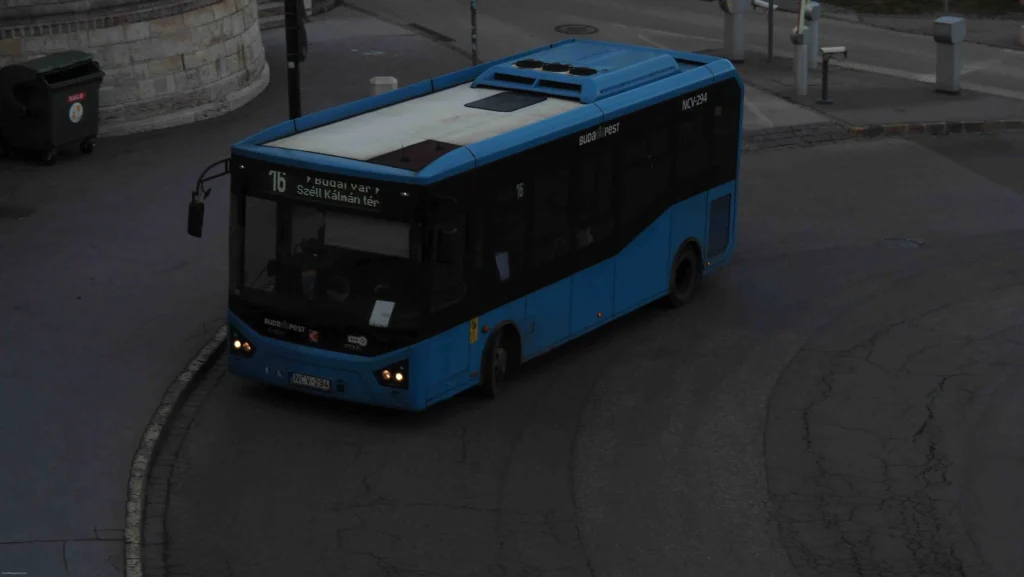
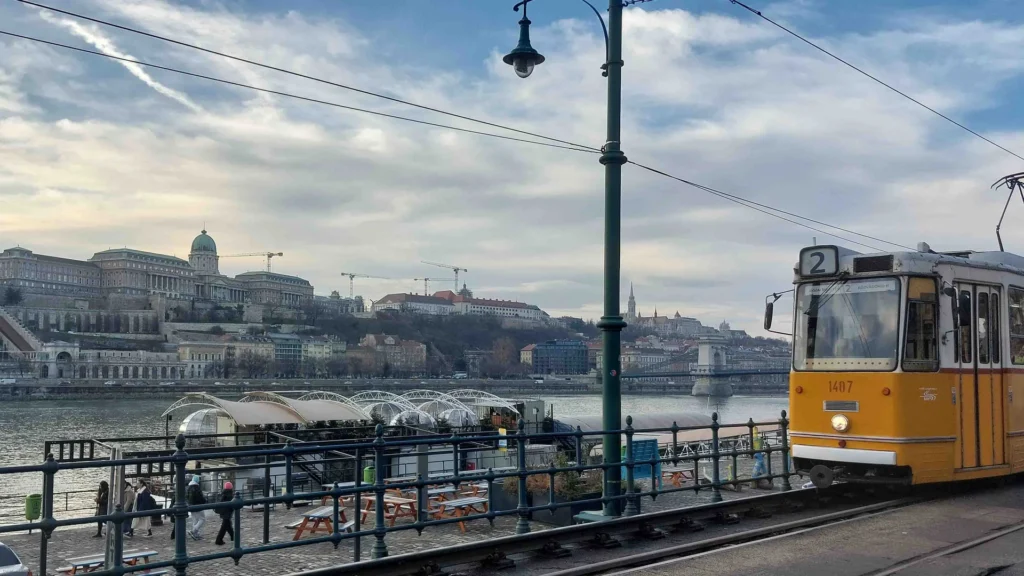
What to Do in Budapest
Explore Buda Castle and the Fisherman’s Bastion
Dominating the skyline of Buda, Buda Castle is a UNESCO World Heritage site housing the Hungarian National Gallery and the Budapest History Museum.
Just a short walk away, Fisherman’s Bastion offers breathtaking panoramic views over the city and the Danube. Right next to it stands Matthias Church, a stunning Gothic landmark with colorful roof tiles and intricate architecture. The Fisherman’s Bastion is one of the most beautiful building in Budapest, which was designed at the end of the 19th century. You can visit all day long, but it will get busy during sunset. We recommend to go during sunrise, when it’s a lot less crowded and maybe even more magical.
Chain Bridge
The iconic Chain Bridge, the first to permanently connect Buda and Pest, is a must-see landmark. Walking across it offers stunning views of the Danube and the city’s skyline.
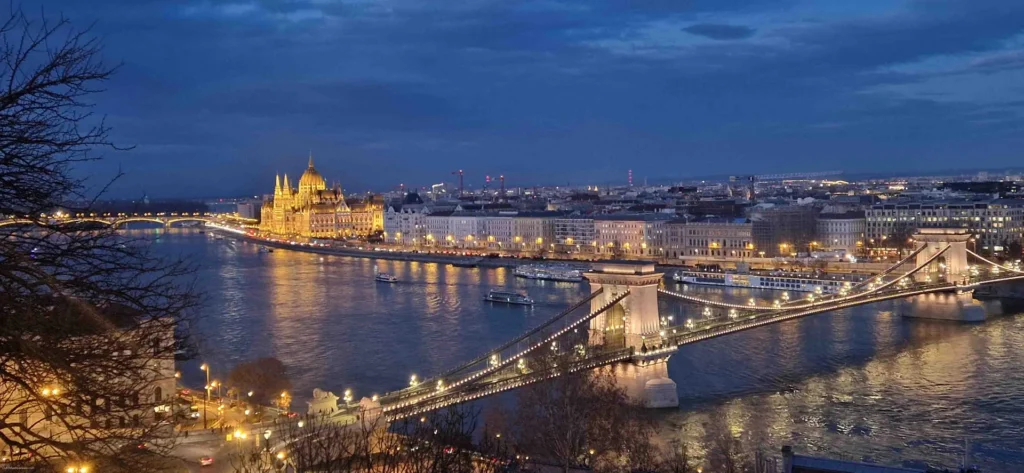
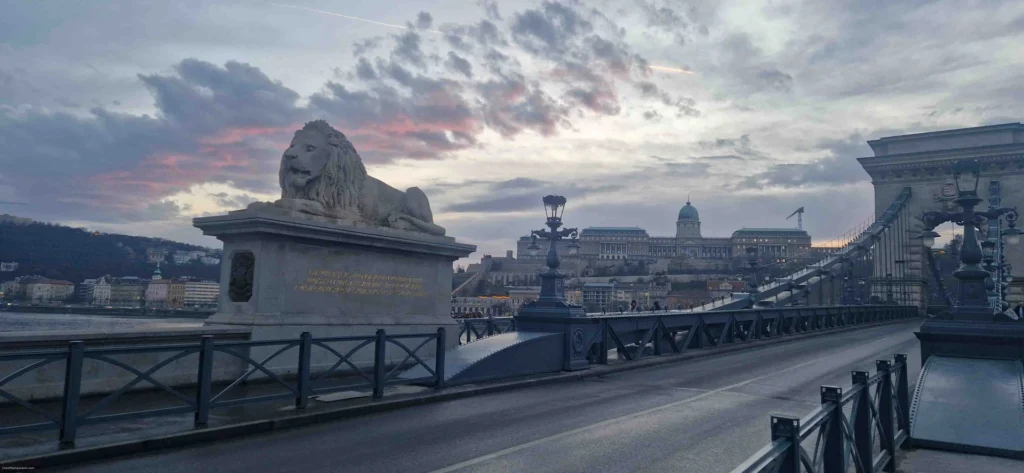
Hungarian Parliament Building
The Hungarian Parliament Building, one of the most iconic structures in Budapest, sits majestically along the Danube. Its neo-Gothic design and grand interiors make it a must-visit, offering guided tours showcasing its rich history and impressive architecture.
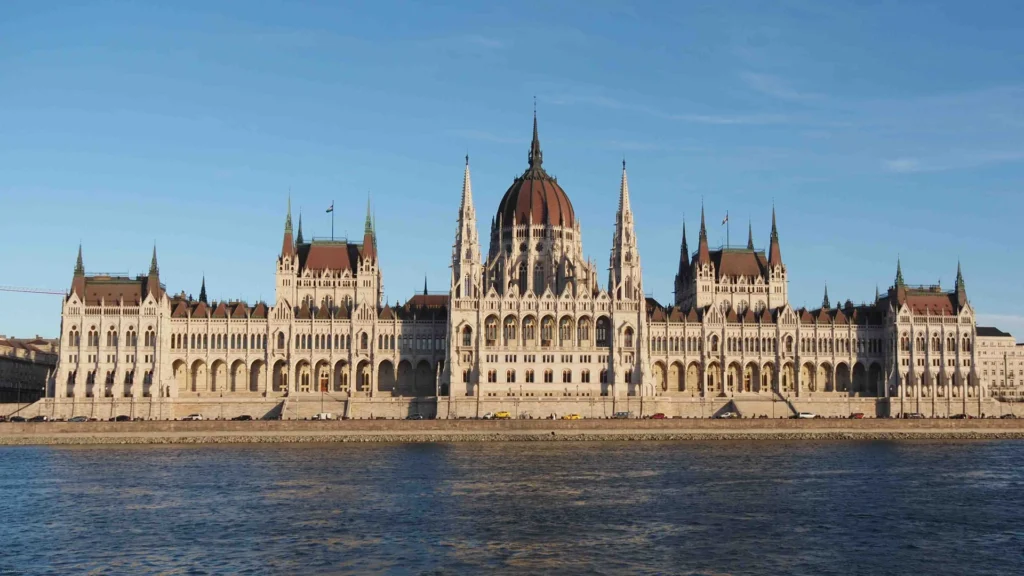
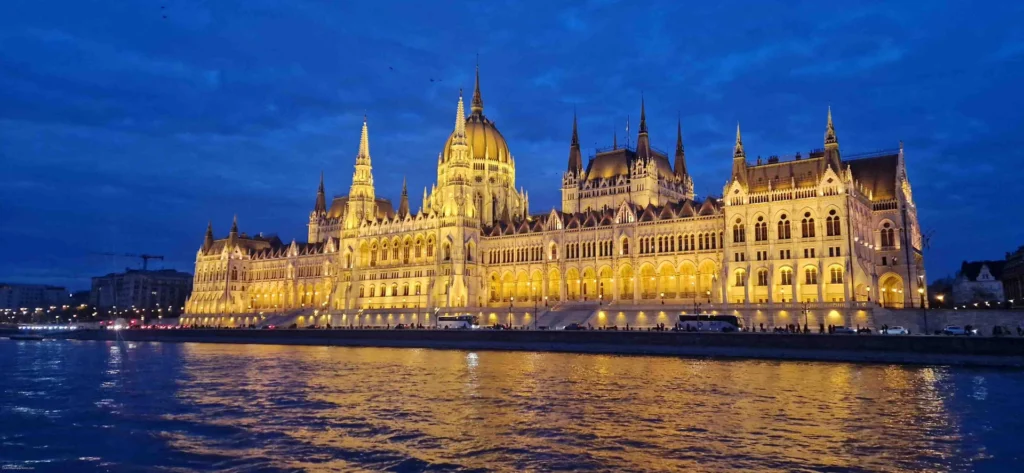
Shoes on the Danube
A short walk from the Parliament, the “Shoes on the Danube” memorial is a deeply moving tribute to the Jewish victims of World War II. The iron shoes lined along the riverbank symbolize those who were tragically executed at this spot in 1944. Jewish men, women, and children were forced to remove their shoes before being shot into the river. Following the 2023 conflict between Israel and Hamas, the monument has also been used to highlight the ongoing struggles faced by communities affected by war and displacement.
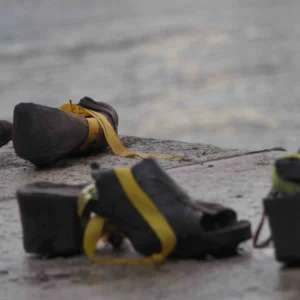
St. Stephen’s Basilica
Named after Hungary’s first king, St. Stephen’s Basilica is a breathtaking example of neoclassical architecture. Its grand interior features striking red marble columns, intricate golden details, and a stunning frescoed dome. Climb to the top of the dome for an incredible panoramic view of Budapest’s skyline. The square in front of the basilica is a lively spot, perfect for enjoying a drink or dinner at one of the surrounding cafés and restaurants while taking in the atmosphere.
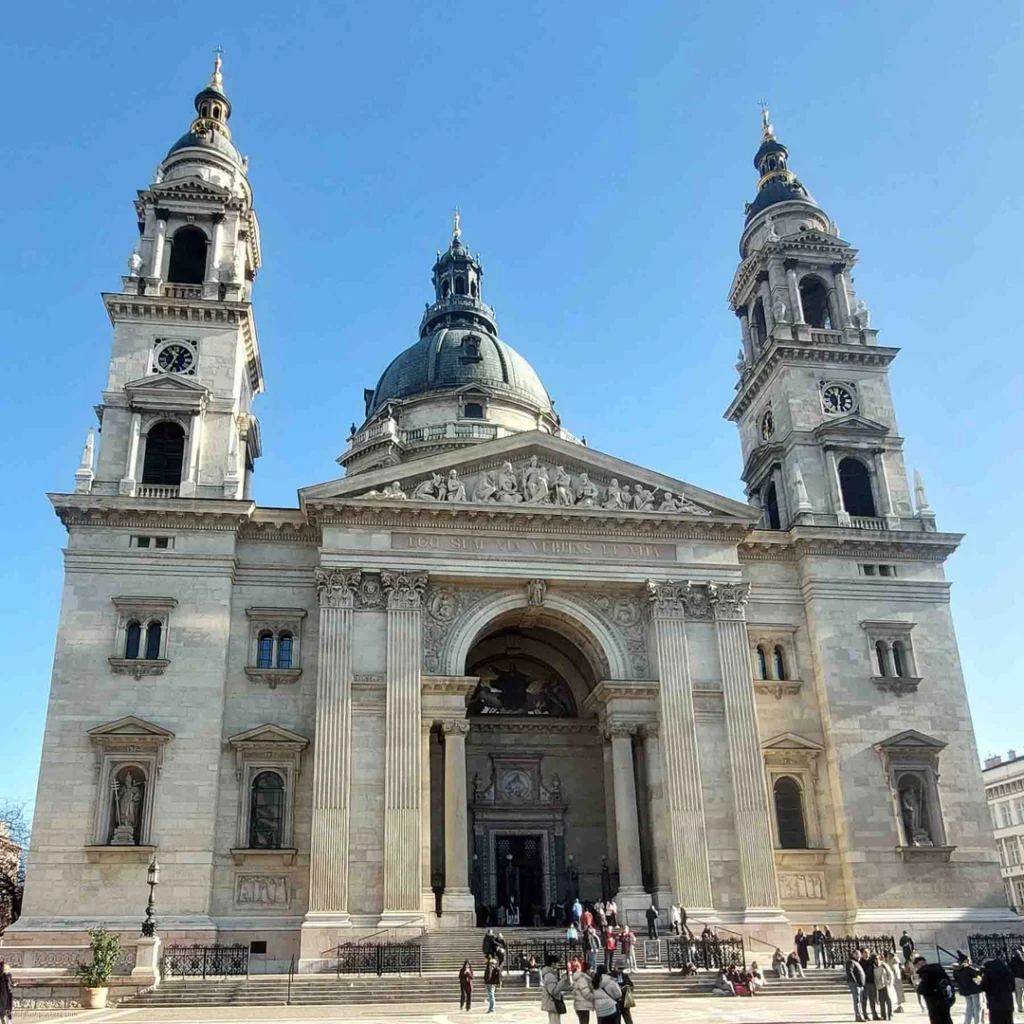
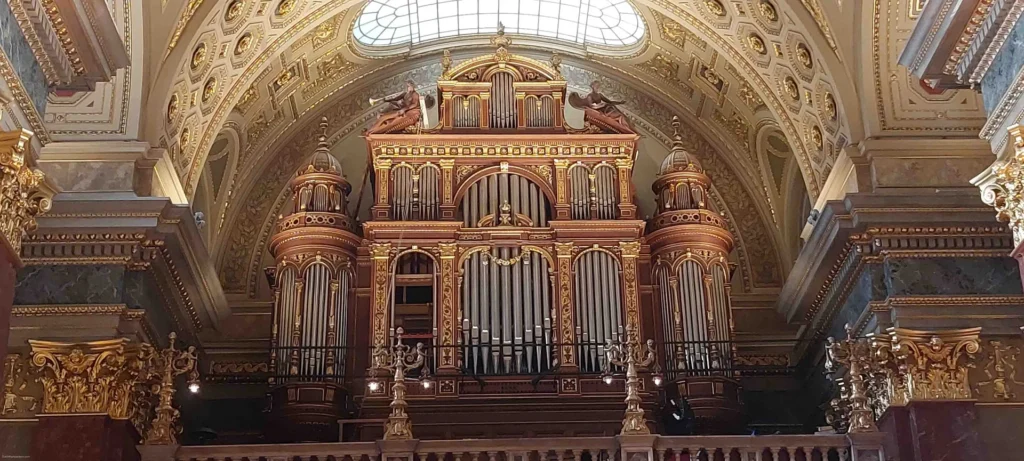
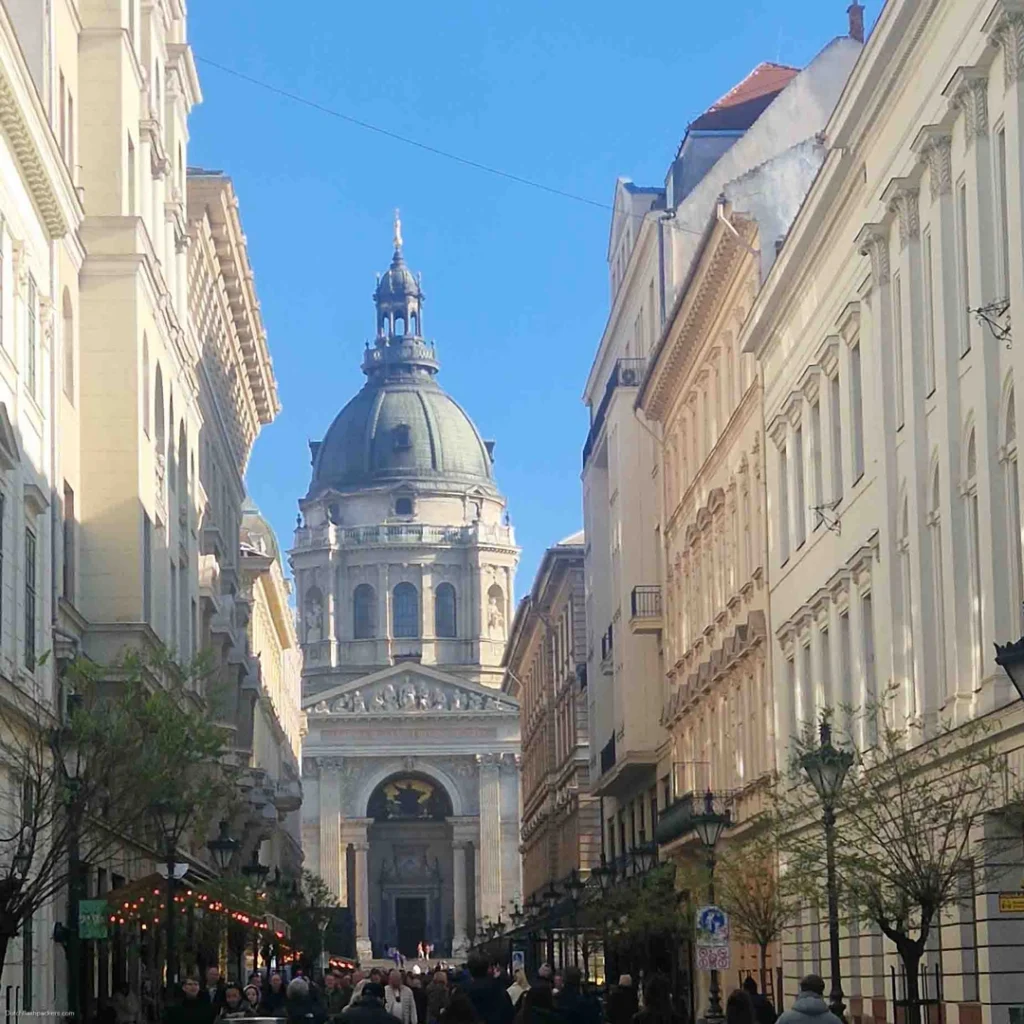
Heroes’ Square & City Park
One of Budapest’s most significant landmarks, Heroes’ Square pays homage to Hungary’s national leaders with grand statues and a striking central column. It is flanked by the Museum of Fine Arts and the Hall of Art. Just behind the square lies City Park (Városliget), a vast green space home to Vajdahunyad Castle, the Budapest Zoo, and one of Europe’s largest outdoor ice rinks, which opens annually during winter. The park is also home to the famous Széchenyi Thermal Bath.
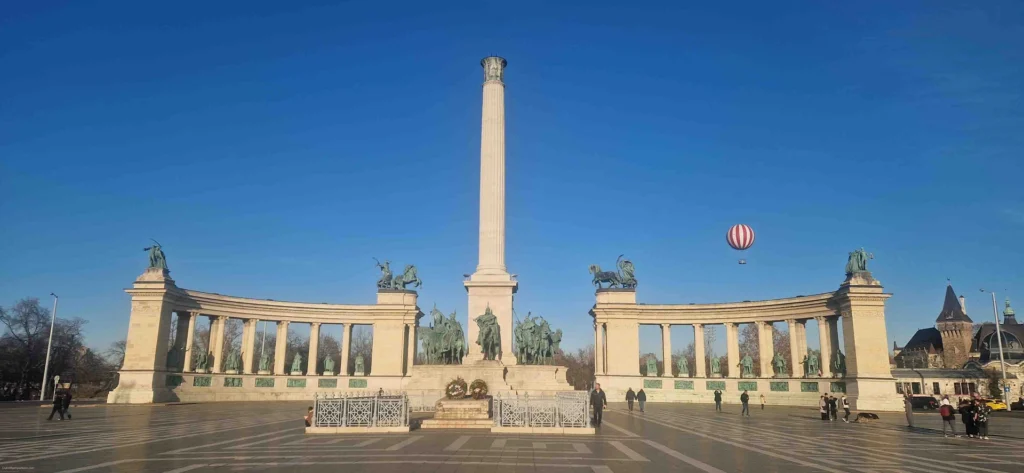
Visit One of Many Thermal Baths
Budapest is often called the “City of Spas” due to its 125+ thermal baths and visiting one is therefore an essential experience. The most famous, Széchenyi Thermal Bath, features grand neo-baroque pools, while Gellért Thermal Bath impresses with its Art Nouveau decor. We visited the Széchenyi baths and had a great experience. It can get busy, but there are a lot of baths to choose from. Remember to bring your own bathing suit, towel and slippers, otherwise you will have to rent or buy them.
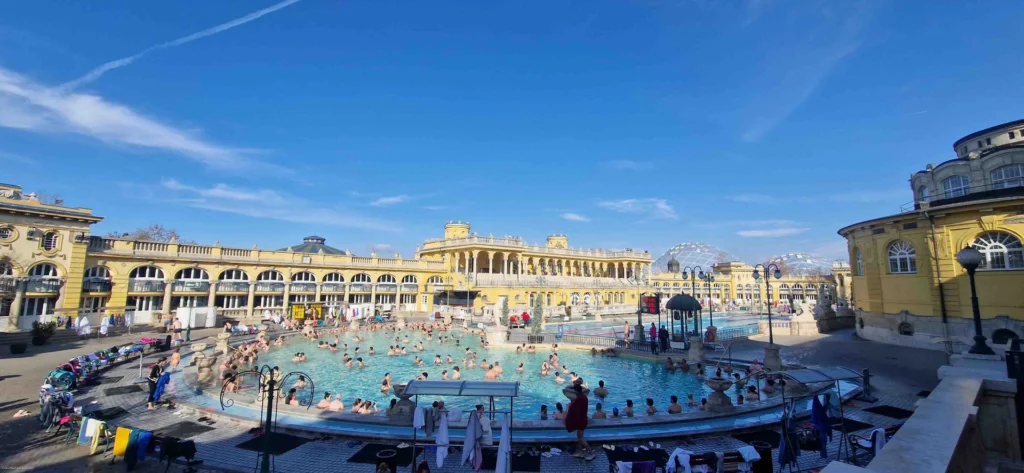
Explore the Caves Under the City
Beyond the bustling streets of Budapest, the city holds a hidden treasure—an underground world of caves. Budapest sits atop a vast network of limestone caves, many of which are still being explored. Natural thermal springs have shaped these caves over thousands of years, creating a stunning landscape.
One of the most popular caves to visit is the Pál-völgyi Cave, which offers guided tours through its stunning rock formations. Visitors can marvel at the intricate stalactites and stalagmites, winding tunnels, and the natural beauty hidden beneath the city. The cave’s paths are well-lit, and the tours give fascinating insights into the geology and history of the area, making it a perfect stop for nature lovers and history enthusiasts alike.
For those seeking a more adventurous experience, Molnár János Cave is an incredible option for experienced divers. This cave features thermal spring waters flowing through its underground chambers, creating a unique environment. It’s a popular spot for cave explorers and a heaven for experienced divers, with underwater passages waiting to be discovered. The thermal water in these caves is incredibly warm, making it a memorable and rare experience to explore an active, natural thermal spring system beneath the city. Only a few caves in the world offer this type of experience, so it’s definitely a must-try for the more adventurous traveler.
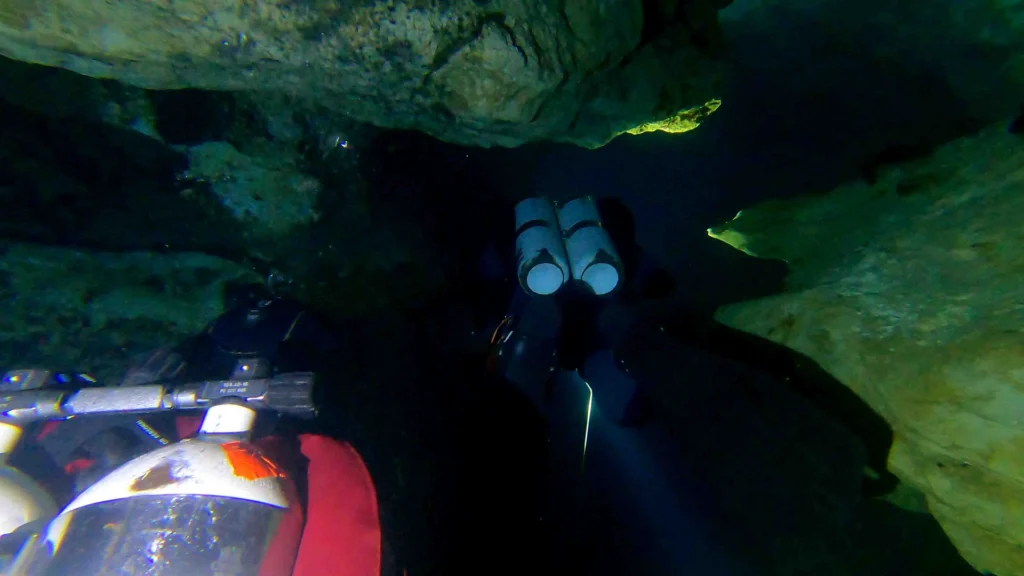
Danube River Cruise
One of the best ways to experience Budapest is from the Danube River. Whether you opt for a daytime sightseeing cruise or a romantic dinner cruise at night, the views are unbeatable. As you glide along the river, you’ll pass iconic landmarks like the Parliament, Buda Castle, and the Chain Bridge. There’s no better way to take in the city’s beauty! If you have to choose either a day or a night cruise, we’d suggest the night cruise. The landmarks do look even better while illuminated.
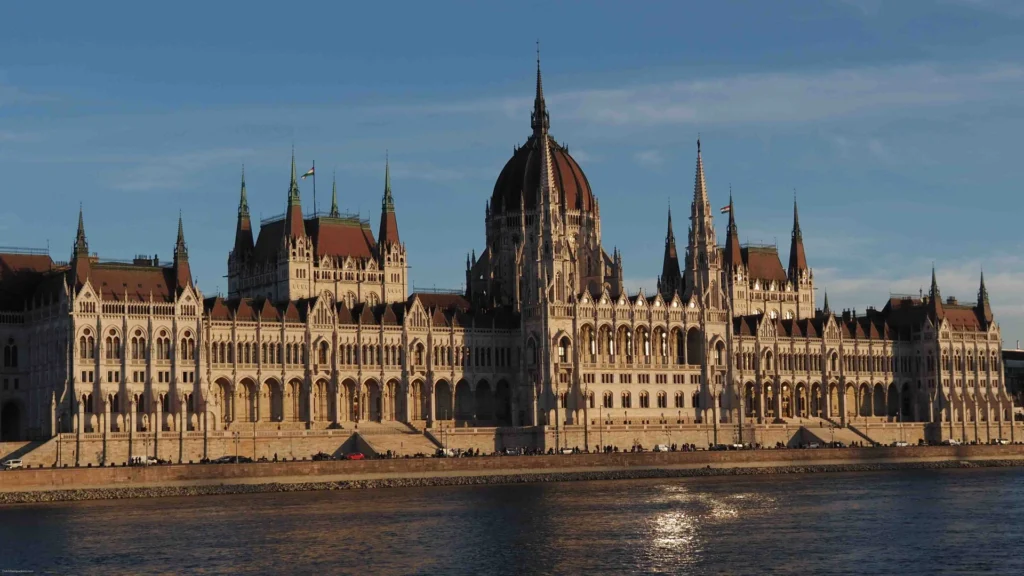
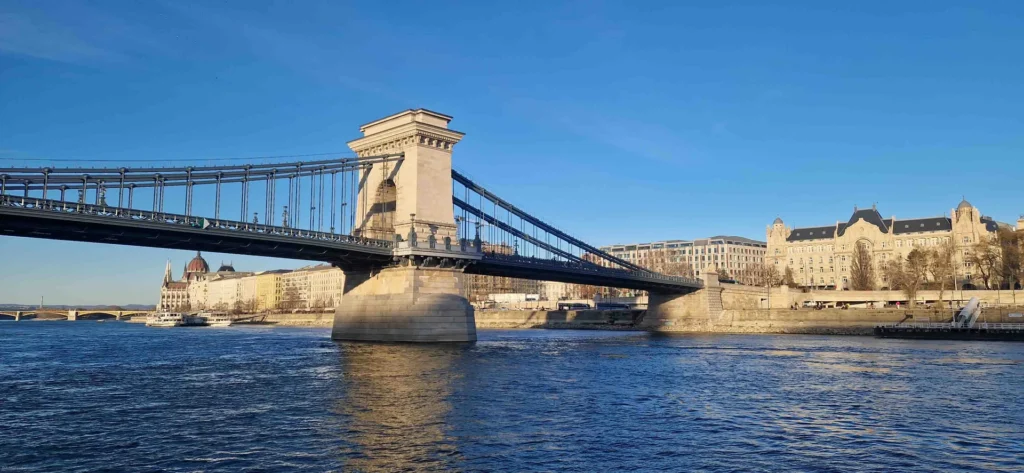
The Jewish Quarter and its Dohány Street Synagogue
Budapest’s Jewish Quarter is home to one of the largest synagogues in the world, the Dohány Street Synagogue. Its Moorish Revival architecture is awe-inspiring, and it also houses the Hungarian Jewish Museum and a Holocaust Memorial. For a deep dive into Jewish heritage and history, this is a must-visit.

The Great Market Hall
For a taste of authentic Hungarian cuisine, the Great Market Hall is a must-visit. Wander through its colorful stalls and sample local specialties like lángos, goulash, and Hungarian paprika. The ground floor buzzes with locals shopping for fresh produce and spices, while the upper floors cater mostly to tourists with souvenir stalls. The food on the upper floors isn’t bad, but if you want to experience the best of Hungarian street food, head to the ground floor.
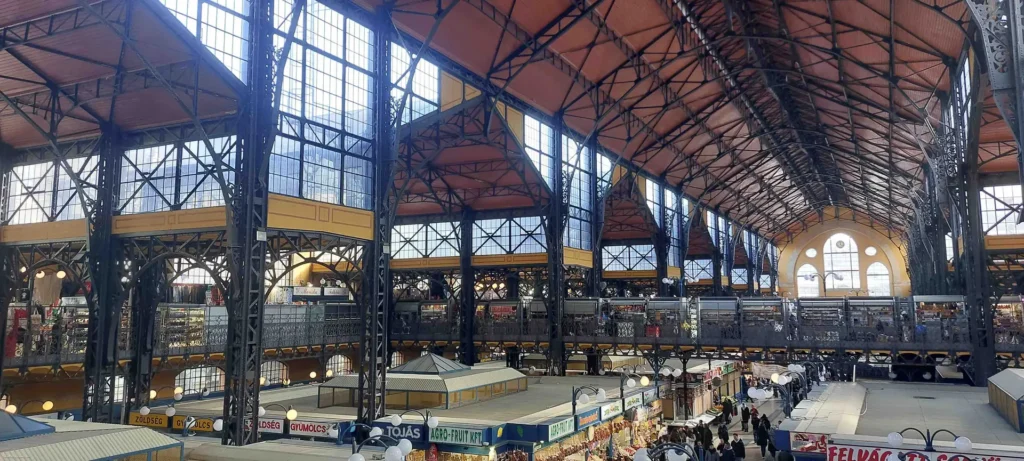
Taste the Hungarian Cuisine
Hungarian cuisine is hearty, flavorful, and varied. It’s the perfect mix of rich stews, savory meats, and mouthwatering pastries. While goulash is likely the most famous dish, there’s so much more to savor. Here are a few of our favorites:
- Goulash: This iconic Hungarian dish is more than just a soup—it’s a rich and hearty stew, typically made with beef, paprika, potatoes, and a variety of vegetables. It’s the ultimate introduction to Hungarian flavors, with paprika being the key ingredient that defines many traditional dishes in Hungary.
- Chicken Paprikash: A comforting classic, chicken paprikash features tender chicken simmered in a creamy paprika sauce. Chefs traditionally serve it with potato dumplings (called nokedli) or sometimes wide egg noodles, which soak up the flavorful sauce. Every family might make it slightly differently, but it’s always a warm, satisfying meal.
- Kürtoskalács: This sweet, chimney-shaped pastry is one of Hungary’s most beloved street foods. It’s made from sweet dough that’s rolled around a metal cylinder and then roasted over an open flame, creating a crispy, caramelized outer layer. It’s often rolled in sugar, cinnamon, or other toppings like chopped nuts for added flavor. Perfect for a sweet snack while exploring the city! We really enjoyed Keto Neni, plenty of choice and freshly made.
- Lángos: A popular street food, lángos is deep-fried dough typically topped with garlic, sour cream, and cheese. Some variations might include ham, sausage, or even sweet toppings like jam or powdered sugar. It’s indulgent, crispy, and delicious, making it a perfect treat after a day of sightseeing.
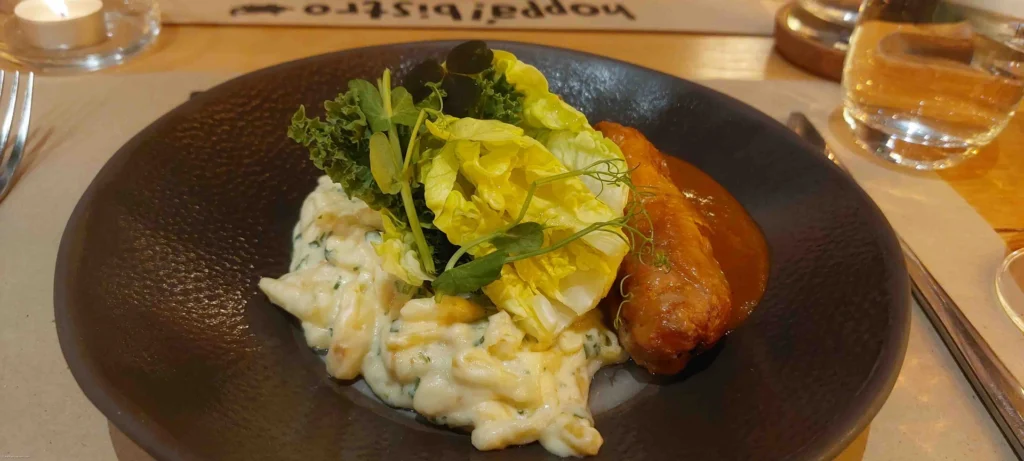
If you’re looking to try a variety of these traditional dishes, head to Karavan, a popular food stall area near Szimply Kert, the oldest ruin bar in the city. While Karavan has a great selection of Hungarian street food, it’s important to note that it closes during the winter months, so be sure to check the opening times before you go!
Explore the Unique Ruin Bars
Budapest is famous for its ruin bars, quirky watering holes set in abandoned buildings and courtyards. These bars are a perfect mix of nightlife and unique history. Many are located in the Jewish Quarter, with Szimply Kert being the oldest and most famous. If you’re in the mood for drinks during the day, don’t miss this spot—it’s a great place to sip cocktails surrounded by eclectic decor.
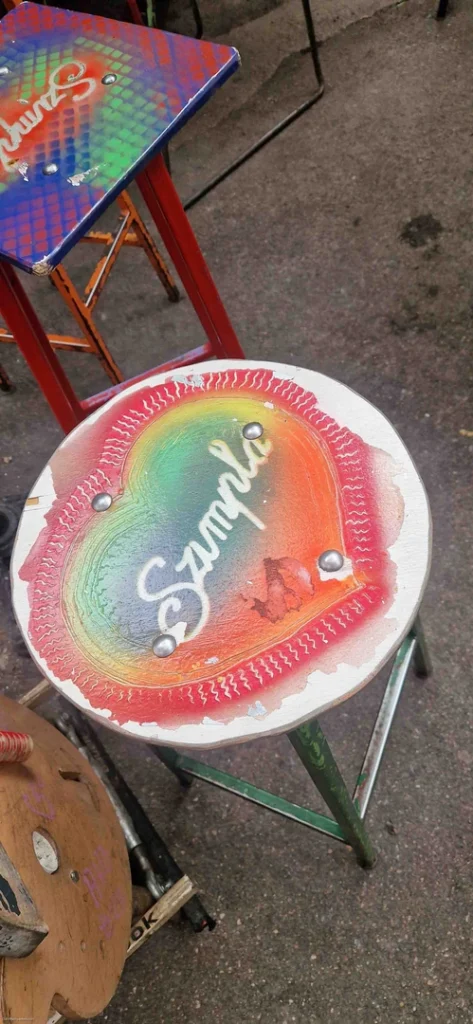
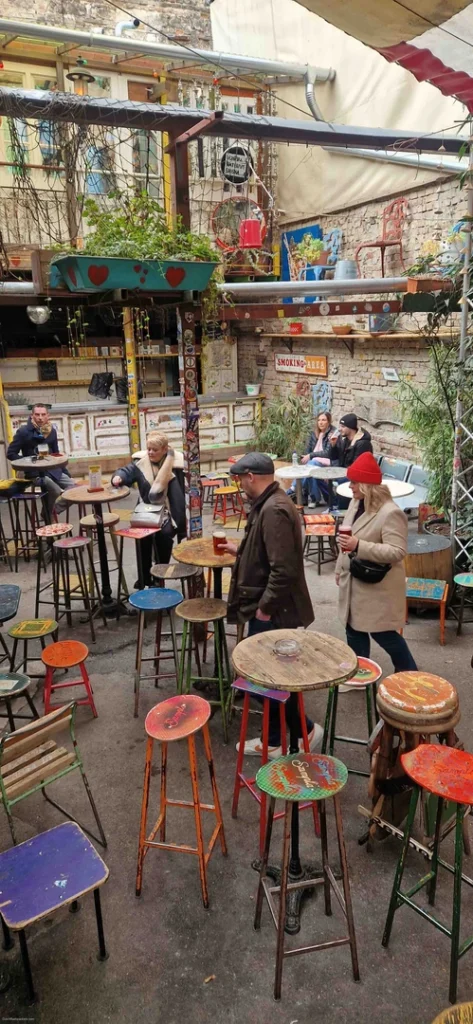
Sip Cocktails with a View
Budapest offers some incredible rooftop bars with spectacular views of the city. Head to High Note, located near St. Stephen’s Basilica, where you can admire the basilica’s roof while enjoying a cocktail. For more great views, check out 360 Bar or Leo Rooftop Bar on the Buda side. Although the drinks are a bit pricey, the views make it totally worth it. It’s the perfect spot to relax and watch the sun set over the city.
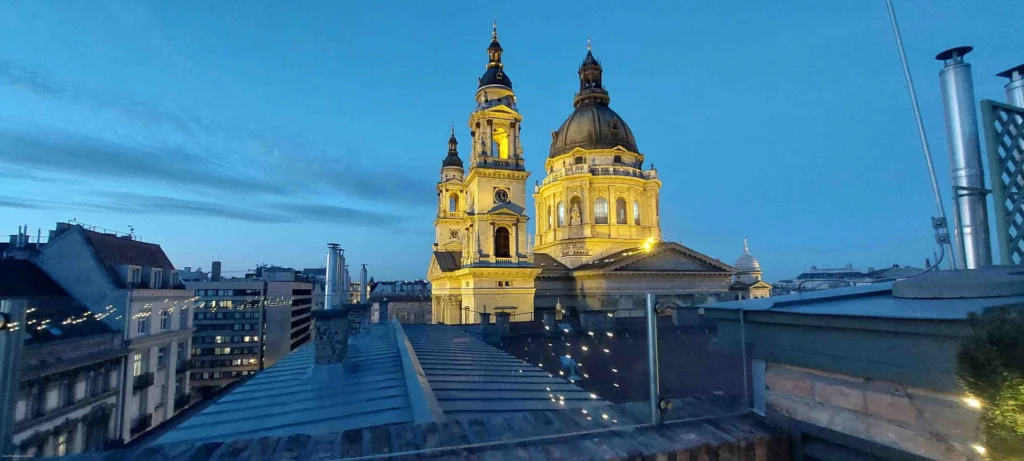
Where to Eat in Budapest
Budapest offers a fantastic mix of local and international flavors. Here are some of our favorite spots to check out:
- Mazel Tov: A trendy spot with plenty of greenery, Mazel Tov serves Mediterranean and Middle Eastern dishes with a Hungarian twist. The beautiful courtyard and relaxed vibe make it a great choice for brunch or dinner.
- Hoppa! Bistro: Known for its modern take on Hungarian comfort food, including the best chicken paprikash we tasted, along with other seasonal dishes. It’s a cozy place with creative dishes and a welcoming atmosphere.
- Rosenstein: This family-run restaurant offers traditional Hungarian dishes, with a special focus on Jewish heritage. Favorites like pörkölt and töltött káposzta come served in a homey, authentic setting.
- Bestia: An upscale restaurant near the Jewish Quarter, Bestia blends Italian and Hungarian flavors with fresh, seasonal ingredients. It’s perfect for a stylish dining experience.
- Kato Neni: A must-try for kürt?skalács lovers, Kato Neni serves up this famous chimney cake fresh and hot, rolled in sugar and cinnamon—a delicious snack to grab on the go.
- Retek Bisztro: This cozy bistro combines traditional Hungarian dishes with international flair, focusing on fresh, seasonal ingredients and local wines.
- Getto Gulyás: Known for its rustic charm, Getto Gulyás serves some of the best goulash in Budapest, along with other Hungarian comfort food, in a casual setting.
Pro tip: Reserve a table at these popular spots, especially on Fridays, Saturdays, and during holidays, as they tend to get busy.
Where to Stay in Budapest
The best areas to stay in Budapest are Deák Ferenc Tér and Astoria. These central locations allow you to explore much of the city on foot while also providing easy access to trams, buses, and metro lines.
The Intercontinental Budapest is an iconic 5-star hotel right on the Danube River. It has stunning views of the Chain Bridge and Buda Castle. It offers spacious rooms, a wellness center, and an elegant atmosphere, perfect for a luxurious city stay. Double rooms start at €200 a night.
Astoria Blue is a stylish boutique hotel in the heart of the city. It’s close to public transport and within walking distance of the Jewish Quarter, making it a great base for exploring Budapest. Double rooms start at €85 a night.
Budapest has some fantastic hostels, including Wombat’s Hostel. A clean and social hostel with a central location. It has great common areas, making it ideal for meeting fellow travelers. Dorms start at €10 a night and there are a limited amount of private rooms available as well.
Help us by supporting our blog
We want to give you honest reviews and keep this blog free. Therefore we added some affiliate links that might give us a commission at no additional cost to you. Support our blog by booking through our partners.

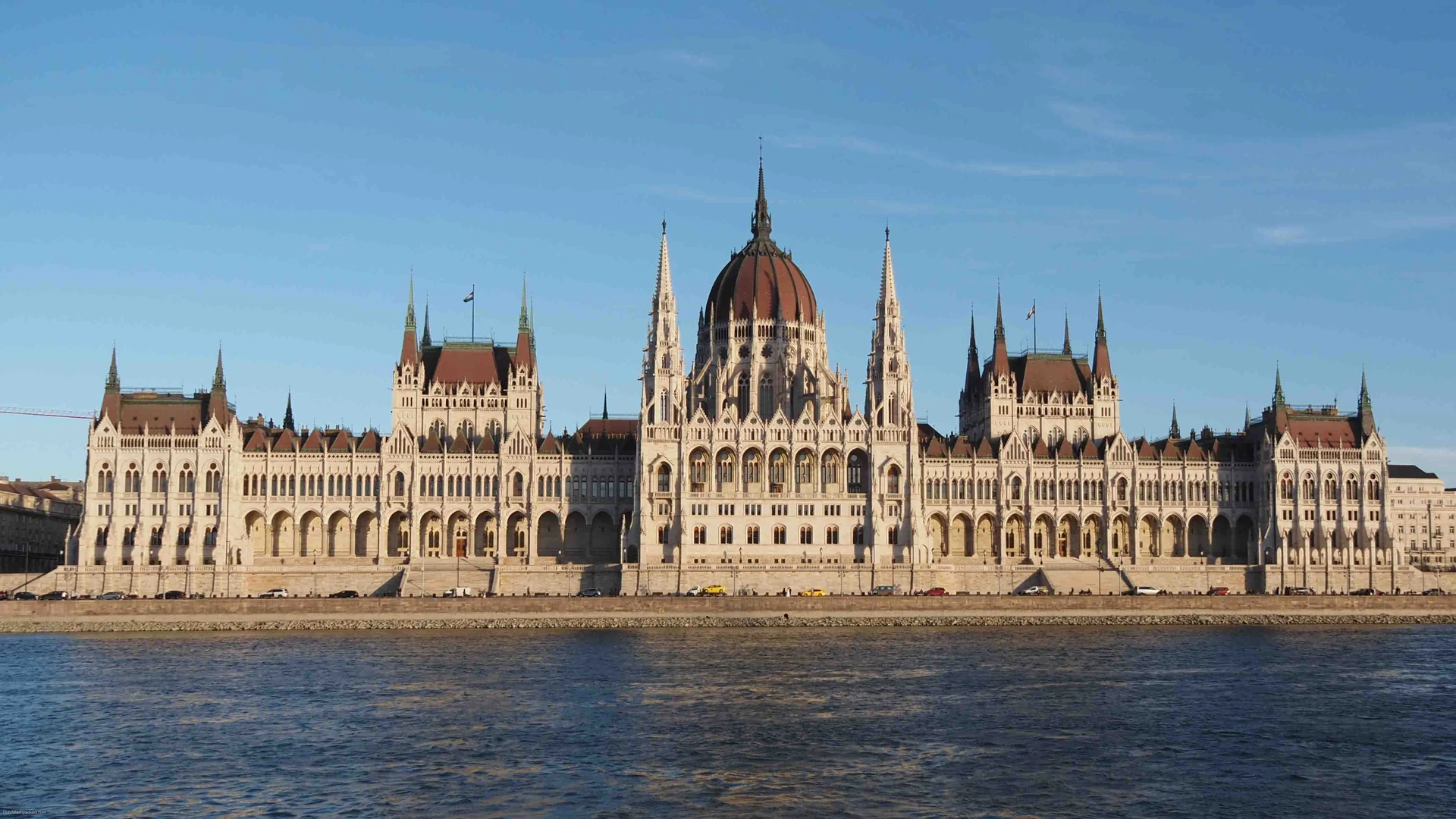
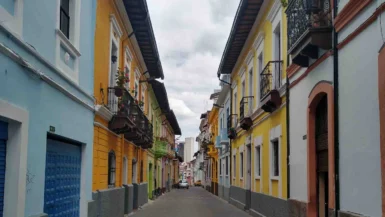

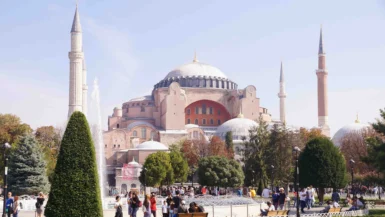
It’s been three years since I was there with my kids. I missed those caves, looks cool! So I have to go back once more!
Goodness – I knew about the Shoes on the Danube, but it is good to hear they are continuing to highlight the current issues with genocide and displacement. It’s such sad and scary news… but it is good to see it being acknowledged.